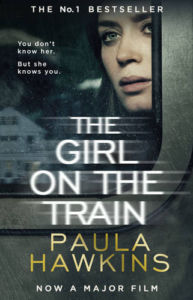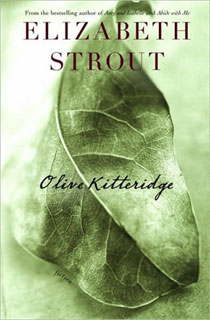How to Master Writing Parallel Narratives
Novels with parallel narratives are a favourite of mine. I love the way they flit between different storylines, creating intrigue and anticipation. How will they eventually link up and reveal the broader picture? In order for them to work, they need a distinct purpose and to be written with sharp attention to detail and precision.
Purpose
What makes the reader engage with a story? It’s the lure of colourful characters and compelling events which hook them in. Inquiring minds begin asking questions, continuing to read until answers are found. Sometimes imagination is required to fill in the gaps and decide the outcome. Curiosity is human nature. Take celebrity culture for example. Most of us, at one time or another, will have been seduced by a juicy bit of celeb gossip from a tabloid headline (even if we like to think we’re immune). There are plenty of ways in which the parallel narrative can be used to pique the interest of your readers so let’s explore a few of them:
Tension
 A parallel that masters the slow build-up of tension perfectly is The Girl on the Train by Paula Hawkins. The reader is shifted back and forth between three different narrators, none of whom are reliable as witnesses. The most obvious of these being Rachel, an alcoholic prone to drink induced blackouts. There is a hunger for what happens next and a keen sense that the truth lies just below the surface – if only it could be reached.
A parallel that masters the slow build-up of tension perfectly is The Girl on the Train by Paula Hawkins. The reader is shifted back and forth between three different narrators, none of whom are reliable as witnesses. The most obvious of these being Rachel, an alcoholic prone to drink induced blackouts. There is a hunger for what happens next and a keen sense that the truth lies just below the surface – if only it could be reached.
Creating conflict internally, within a character’s head or externally between characters and/or situations is a sure-fire way to build tension. The Girl on the Train manages to skillfully achieve both.
Tension should fluctuate throughout the story. There’s a fine line between creating anticipation and frustration. Not only would it be impossible to maintain a high level of tension for the duration, it wouldn’t make for an enjoyable read.
Mystery
Parallel narratives are a great tool to use for solving a mystery. Seeing things through the eyes of one character can be quite limiting whereas multiple plotlines allow the reader to observe events that the protagonist hasn’t been directly involved in.
In Extremely Loud and Incredibly Close by Jonathan Safran Foer, Oskar, the nine year old protagonist, is set on solving the mystery of the key he found belonging to his late father. This key is an analogy for unlocking the truth about his father. This will in turn provide the closure Oskar so desperately craves after his father’s death in the the 9/11 attacks. Running alongside his story is that of Oskar’s grandfather, portrayed in a series of handwritten letters. The two stories merge with the revelation that a mysterious character known as “the renter” is actually Oskar’s grandfather.
Character Motivation
 Additional storylines add layers to a plot and contextualise it. These layers help to flesh out the characters by revealing outside influences on their lives. An interesting example of this technique can be observed in Olive Kitteridge by Elizabeth Strout.
Additional storylines add layers to a plot and contextualise it. These layers help to flesh out the characters by revealing outside influences on their lives. An interesting example of this technique can be observed in Olive Kitteridge by Elizabeth Strout.
Less of a novel and more of a collection of short stories, each episode looks at a different character who interacts with Olive with varying degrees of intimacy. Take the juxtaposition of the first two stories. The first one, Pharmacy, explores Olive’s relationship with her husband. She is quite frankly rather horrid to him and he, though still loving her, fantasises about one of his employees. In contrast, Incoming Tide shows a more caring side to her when she dissuades an ex-pupil from committing suicide. It offers a real insight into the richness and complexities of that character’s life.
There is always a danger of using too many plot lines and losing the reader in a sea of confusion. This, however, is the beauty of the format of Olive Kitteridge. Each episode is linked to the wider story of Olive yet remain as separate entities.
Dramatic Irony
Dramatic irony is when the reader knows more about the characters than they know themselves. I’d be remiss not to reference one of the most famous uses of dramatic irony in literature. It is, of course, William Shakespeare’s Romeo and Juliet. The reader knows that Juliet is not really dead but Romeo, stricken with grief, commits suicide by drinking poison. When Juliet wakes to find a lifeless Romeo, she then stabs herself with a dagger to complete the tragedy. The reader can only observe as the story unfolds and subsequently left with a sense of helplessness.
In conclusion…
Reading a novel of parallel narratives asks for a certain level of commitment from the reader. They need to be invested in all strands in order for them to feel inclined to stick with it. You don’t want the reader skimming sections which they find less interesting and missing details that are integral to the overall plot. There is a need for effortless transition between storylines to allow narrative flow so that the reader is fully engaged with the entire story. Making subtle reminders will help jog memory without being repetitive. Flashbacks are another useful tool and particularly useful when the story does not follow on chronologically.
Although not a genre in itself, the parallel narrative lends itself to many. The literary works referenced within this post include a psychological thriller, post-modern literature, a novel / short story fusion and even a play.
If you’d like to add more parallel narrative novels to your ‘to read’ shelf, hunt down copies of The History of Love by Nicole Krauss, The Lord of the Rings Trilogy by J. R. R Tolkien and The Brief Wondrous Life of Oscar Wao by Junot Díaz.





Leave A Comment